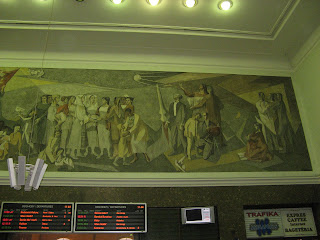
This monument is in the village of Kopčany in south-west Slovakia, near the border with the Czech Republic. It commemorates the Russian soldiers who died during the liberation of the village from the Nazis on April 10, 1945. It lists the name, rank and date of birth of each soldier, and at the bottom it also mentions nine more soldiers who could not be identified because they were not carrying papers. It is unusual to find such a monument in Slovakia which is only written in Russian, usually the captions are written in both Russian and Slovak. The most interesting part of the inscription is the line at the bottom, which reads "Sleep peacefully in brotherly ground". Therefore the brotherly Slavic relations between Russians and Slovaks were called upon to show that the Russian soldiers were not buried there in foreign soil, but died in the cause helping a fellow Slavic, socialist country.





































